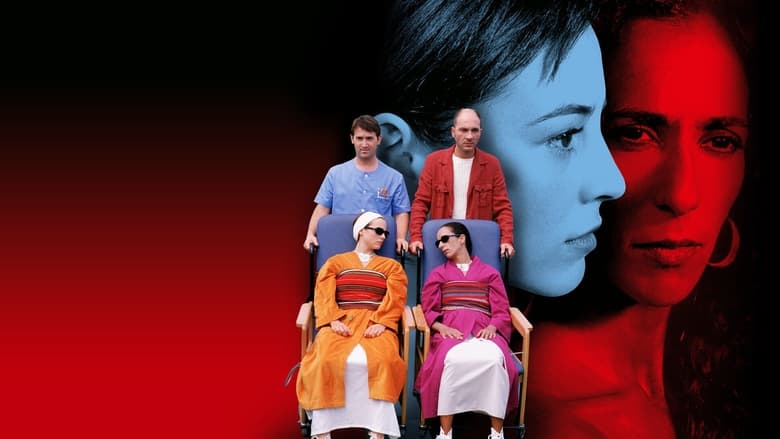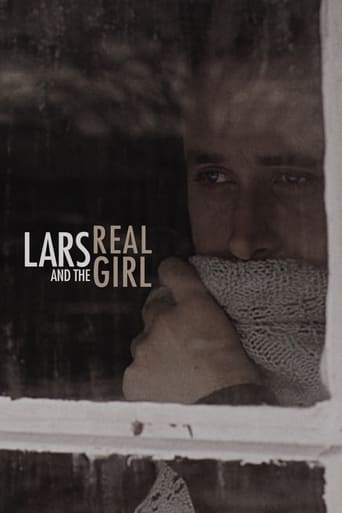

Talk to Her (2002)
Two men share an odd friendship while they care for two women who are both in deep comas.
Watch Trailer
Cast
Similar titles
Reviews
Just what I expected
For all the hype it got I was expecting a lot more!
The performances transcend the film's tropes, grounding it in characters that feel more complete than this subgenre often produces.
Let me be very fair here, this is not the best movie in my opinion. But, this movie is fun, it has purpose and is very enjoyable to watch.
It would not be unexpected to come away conflicted about this movie. On the surface it's a moving story about personal relationships gone unrequited, but the tenor of the story takes a drastic turn when it's revealed that a comatose patient winds up pregnant by means of the male nurse assigned to her care. Told in turn via flashback and present day, an underlying message of maintaining hope in miracles is a good one, and Benigno Martin (Javier Cámara) is a sympathetic character, right up until the point he makes his admission to friend Marco (Darío Grandinetti). Up until that time, one feels there may have been some other hospital employee who might have used Benigno as cover for a horrific violation of the young woman in a coma. But it suddenly becomes a story of a perverse individual who no matter how he might have rationalized things, committed an act of bizarre consequence. I don't think it helped that the silent film clip of the 'shrinking lover' bordered on the pornographic with it's inclusion in the picture. And then, as icing on the cake as it were, the final scene suggests that Marco will soon take up with the former comatose patient Alicia (Leonor Watling). It was not revealed in the story whether or not Alicia was ever told about her stillborn baby, one would have to assume she became aware of it at some point. But to suggest that the two would somehow get together in a meaningful relationship is not a sequel I would particularly care to experience.
This film so intensely dehumanizes comatose women and so romanticizes and apologizes for rapists that you see all these nauseating reviews applauding it. People get so sucked in that they are not even realizing what they are watching - the rape of patients in comas. Read that again. This is manipulative filmmaking at it's WORST. Sickening and insulting to abuse victims.
Having sex with an unconscious person is rape (and there is no doubt the woman is unconscious : she's in a coma).The fact that the perpetrator believes he actually really loves her is not an excuse.The problem comes, of course, that this movie pushes us to embrace the perpetrator's viewpoint, and manipulates us to find his stalking cute and endearing.It's not. It's wrong, and this movie is sick.
Almodovar's movies are generally strange, with eccentric characters, complex pasts, dark secrets, traumas, gripping revelations and dramatic changes. His message is: life is made of surprises, be open-minded, do not judge, appreciate people and events for what they are, not for what you think they are or what you want them to be.On the one hand, "Talk to Her" is more moderate than most of his previous movies: the story makes sense, characters are apparently "normal", provocations are reduced, the music is lovely. On the other hand, what Almodovar tames in plot and roles, he unleashes in form and symbols. It is a peculiar movie, turning values upside down: our thoughts and emotions are puzzled. *** WARNING : CONTAINS SPOILERS ***MALE/FEMALE. Lydia is a bullfighter, a traditionally masculine activity. Benigno is a nurse, a traditionally feminine activity. Marco frequently cries (six times in total). There are homosexual undertones in the friendship between the two men.Almodovar is fascinated by women. This movie is a tribute to them. Alicia and Lydia are the main characters, which is paradoxical since they spend a long moment in a coma.PAST/PRESENT. The movie disintegrates time. It suddenly jumps ahead ("A few months later"); a "present" scene is repeated during a flashback; there is a long flashback ("Four years earlier"), which surprisingly ends as if Benigno were narrating it. The movie inserts five texts indicating periods, but this adds to the confusion since three other flashbacks are not indicated (Marco remembers an evening and a wedding with Lydia, Benigno writes a letter in jail).LIFE/DEATH. The two comatose women seem alive. Alicia is treated like a living person: Benigno talks to her, cuts her hair, massages her and eventually makes love to her. When Benigno tells Marco he saw him crying at the theatre, he puts drops into her eyes: symbolically, she weeps as Marco did. When the two women are next to each other in their armchairs, their heads are tilted so that they seem to watch each other, and Benigno says to Marco: "It seems they are talking about us." After Lydia is hit by the bull, there is a subjective shot of people carrying her: we see what she sees as if she were alive.The flashbacks noted above also "resuscitate" the two women, since we alternatively see them comatose and alive.SANE/INSANE. Marco is reasonable, but achieves nothing: his former girlfriend left him, Lydia was also about to leave him, she dies, his best friend dies. Conversely, Benigno is somewhat deranged but kindly dedicates his life to other people: his mother, Alicia, Marco.GOOD/EVIL. When characters make a good deed, it can have negative effects, and reversely. At the jail, Marco does not tell Benigno that Alicia is alive because he is uncertain how he could react; however, Benigno afterwards commits suicide to reunite with Alicia since he thinks she is still comatose. As an opposite example, Benigno rapes Alicia when she is unconscious, thinking it is a demonstration of love. It is a horrible act yet because of this Alicia will awaken.BEAUTY/HORROR. Two comatose women, two deaths (Benigno's mother, Lydia), a suicide (Benigno), a rape, a stillborn baby: apparently, it is a sombre movie. Yet it is always decent and delicate. Also, out of these hardships, life emerges and hope blossoms: Alicia awakens and meets Marco.COUPLE/LONELINESS. Relationships are either doomed (Marco separates from two girlfriends), either strange (Benigno loves a woman in a coma). Dialogues within couples are rare. Lydia barely talks to Marco and after her accident, he is unable to speak to her as Benigno urges him to. In the car, Lydia tells Marco they need to discuss after the bullfight. We await an important revelation, especially since we see this scene twice but Lydia falls into a coma (another bullfighter will reveal the secret).By contrast, emotional experiences are mainly linked to friendship (Marco and Benigno) or individual connection to art. There are five key artistic scenes: three choreographies by celebrated Pina Bausch (one opens the movie and two close it), a fake film, a live song by celebrated Caetano Veloso. Interestingly, three of these five scenes are silent and two are sung: it highlights the superiority of art over articulated speech to communicate emotions and meaning.The movie opens on a choreography where two women blindly move while a man removes chairs so they won't bump into them. This announces the two unconscious women and Benigno taking care of Alicia.At the end, another choreography shows a woman carried in the air by men, while a glamorous song plays. It symbolises resurrection: of the two women shown at the beginning, only one remains alive (Alicia).The movie closes on a simple yet beautiful choreography, where couples slowly dance from left to right on the rhythm of a sensuous music. Their regular and tranquil pace reinstates the linear movement of time that was disturbed during the movie. In the last shot, a woman and a man are left alone on stage. It shows the seduction game will carry on with Alicia and Marco.The fake silent film extract is funny, erotic, incredible, gently caricaturing old cinema style. It reveals the desire of Benigno, who is a virgin, for Alicia. After seeing it and telling her about it, he makes love to her, which will bring her back to life. It also symbolises the desire to return into the mother's womb: a reference to Benigno previously being very close to his mother, permanently taking care of her.The live song is about a love story which, naturally, is desperate.-----"Talk to Her" can be disconcerting: it feels topsy-turvy, it sometimes is bleak, some scenes are intimate physically or emotionally. Yet Almodovar enchants us, once again, by his graceful style, the touching personalities and his vision about art.








